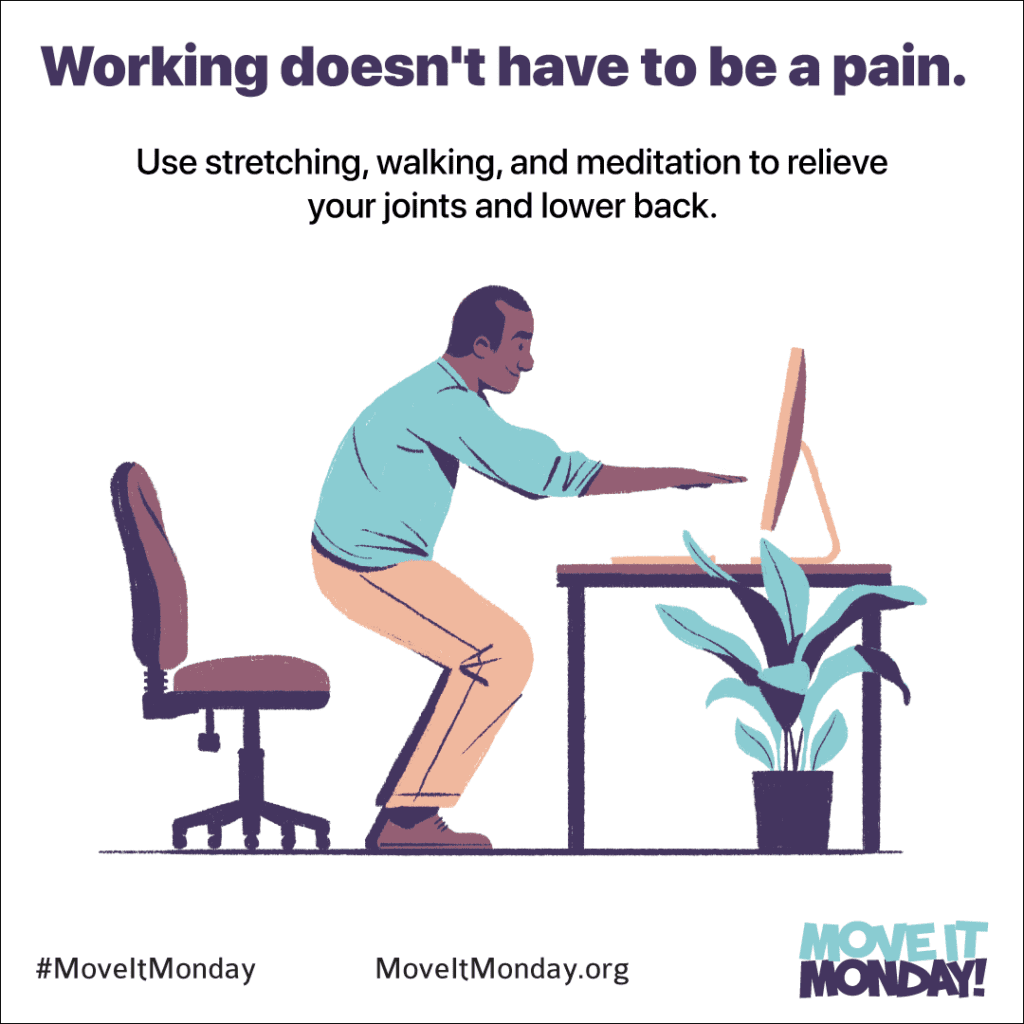Reduce Pain and Improve Posture with Office Exercises
Sitting at your computer — whether you’re working from your office or your living room — can adversely affect your health and happiness. According to a survey from ACUVUE, an office worker spends on average 1,700 hours a year in front of a computer screen — just thinking about that is enough to make your back hurt.
But working from a desk doesn’t have to be a pain. There are movements you can do throughout the day that will spare your spine from certain doom. This Monday, we want to help you find physical comfort anywhere you sit. By incorporating special exercises and movements into your daily routine, you can mitigate the harmful effects of too much sitting.
Walk Around the Room
A periodic walk around the room can do wonders for your physical health. Every 30 minutes, take a two-minute walk around. Use this time to take a bathroom break, grab a glass of water, get fresh air, or even do some sprucing up around the house. Research shows that these punctuated breaks have the power to reduce the risk of premature death by as much as 50 percent.
Improved Posture
Sitting seems straightforward, but there’s actually a proper way to sit so that you aren’t putting tension on your lower back. Proper posture involves sitting with your back straight, shoulders pulled slightly back, neck upright, and buttocks positioned at the edge of your seat. Remember to have both feet flat on the floor (invest in a foot rest or pile of books if your feet can’t reach the floor). Correct posture will help reduce pain and can also improve your breathing by making it easier for your lungs to take in oxygen.
Targeted Micro Stretches
When you repeat the same movement over and over again — typing on the keyboard, clicking the mouse, sitting at a screen — you run the risk of developing a repetitive strain injury. To avoid doing damage to the muscle and ligaments in your arms, wrists, fingers, neck, and shoulders, make sure to incorporate some stretching into your day that focus on these at-risk areas of the body. Try doing some shoulder rolls (lift shoulders up and roll in a circular motion), neck relaxers (let your head drop backward, hold for a moment, and drop head forward), and wrist circles (raise arms in front of you parallel to the ground, rotate wrists in a circular motion in opposite directions).
Mindful Meditation
Mental stress and physical pain go hand-in-hand. Use meditation and mindfulness to ease your mind and relieve stress. Try deep breathing exercises or a mindful body scan to center yourself and shift your concentration away from the discomfort.
